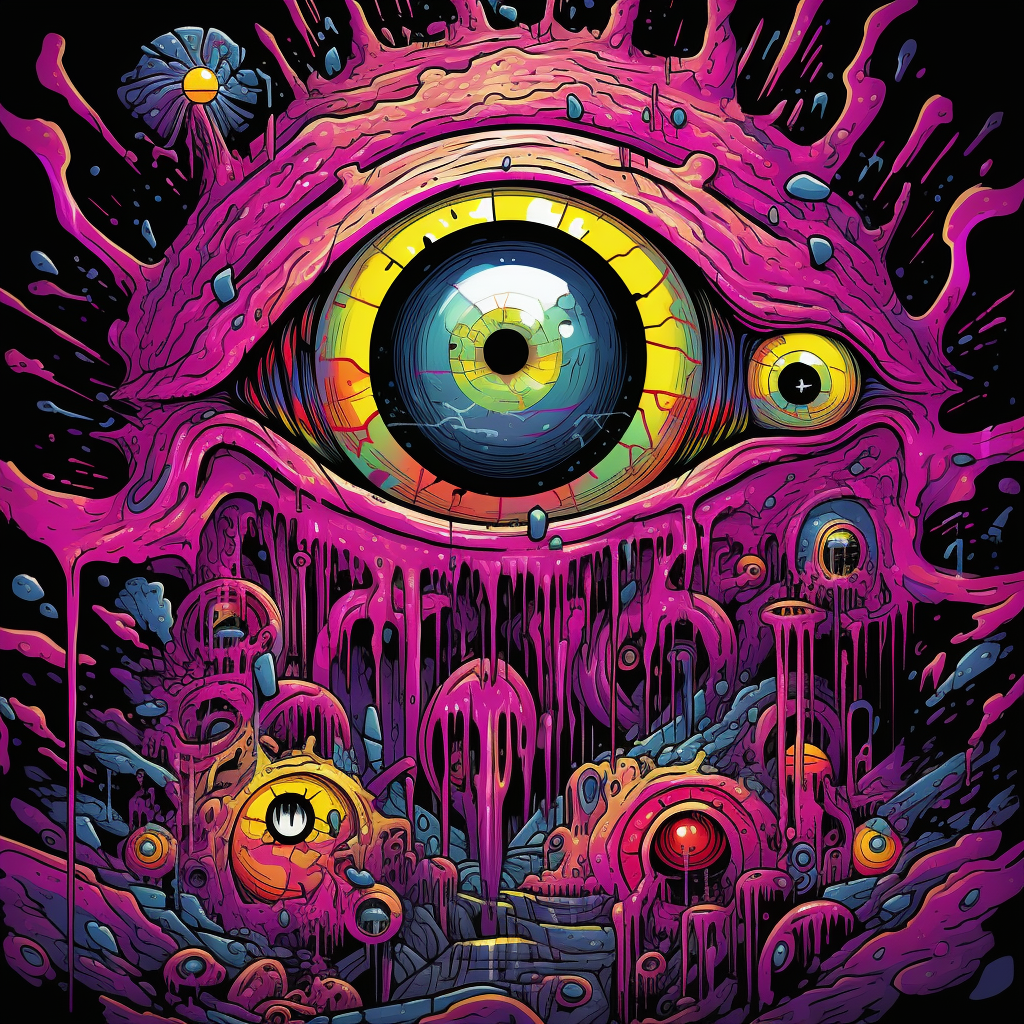Introduction: Understanding the Concept of the Third Eye in Art
Welcome to our exploration of the fascinating concept of the 'Third Eye' in art. This intriguing spiritual symbol, often depicted as an eye on the forehead, represents a state of enlightenment or the evocation of mental images having deeply personal spiritual or psychological significance. It is prominently featured in Hinduism and Buddhism, but its presence can be found in various cultures and economies across the globe. Artists have creatively integrated the Third Eye into their works to express diverse themes like self-realization, spiritual connection, and cognitive power. Join us as we delve into the artistic interpretations of the Third Eye, unraveling its universal appeal and profound impact.
Historical Significance of the Third Eye in Global Art
The third eye, often associated with enlightenment and spiritual awareness, has a rich history in global art. Artists across cultures and economies have used this symbol to express deep spiritual concepts, making it a key element in religious and philosophical art. From ancient Hindu and Buddhist art to modern western interpretations, the third eye represents a 'higher' state of consciousness, signifying an intuitive and inner vision. This artistic symbol transcends cultural boundaries, resonating with audiences worldwide due to its universal theme of spiritual awakening and self-realization.
The Third Eye in Eastern Art: A Deep Dive into Hinduism and Buddhism
The Third Eye, a prominent symbol in Hinduism and Buddhism, is frequently depicted in Eastern art. This mystical concept represents inner sight, enlightenment, and the ability to perceive beyond ordinary sight. Artists often portray it as an eye located in the middle of the forehead, symbolizing a gateway to higher consciousness. This art form is not confined to religious depictions but has permeated into mainstream culture, being used in various forms of contemporary art and even fashion. The use of the Third Eye in art is a testament to the profound influence of Eastern philosophies across cultures and economies, reflecting a universal quest for spiritual awakening and enlightenment.
Western Perspectives: The Third Eye in Christian Art and Iconography
In the realm of Christian Art and Iconography, the concept of the third eye is often represented in a more metaphorical sense. Unlike Eastern traditions that depict the third eye as a physical point between the eyebrows, Western Christian art tends to symbolize it through images of divine illumination or enlightenment. This is frequently portrayed as a halo or an aura of light surrounding the head of holy figures, indicating spiritual insight and connection with the divine. Thus, the third eye, in the context of Christian art, serves as a symbol of spiritual awakening and divine wisdom, rather than a physical attribute.

Indigenous Interpretations: The Third Eye in Native American Art
"Indigenous Interpretations: The Third Eye in Native American Art" delves into the intriguing concept of the third eye as seen in Native American culture. This spiritual symbol, often associated with wisdom and enlightenment, is beautifully depicted in various art forms which include pottery, paintings, and sculptures. The artists skillfully integrate the third eye motif into their work, using it to express profound spiritual beliefs and cultural narratives. The third eye, in this context, often represents a connection to the spiritual world - a gateway to deeper understanding and insight. This exploration of the third eye in Native American art not only reflects the richness of indigenous culture, but also contributes to the broader global conversation around spirituality and art.
Economic Impact: The Value and Market for Third Eye Art
The economic impact of Third Eye Art is significant and growing. This unique form of art, which explores spiritual and mystical concepts, has found a robust market worldwide. Collectors, galleries, and museums are increasingly investing in Third Eye Art due to its unique aesthetic appeal and deep cultural significance. This has led to a rise in the value of such pieces, contributing positively to the global art economy. Moreover, artists specializing in this style are gaining recognition, further enhancing the market demand. Thus, Third Eye Art is not just an artistic expression, but also a profitable economic sector.
The Role of the Third Eye in Contemporary Art and Pop Culture
The third eye, often associated with spiritual awakening and enlightenment, has been a popular theme in contemporary art and pop culture. Artists use the symbol to convey deeper meanings about self-awareness, intuition, and the unseen world. In pop culture, it's frequently found in music videos, album covers, and fashion, symbolizing a connection to higher consciousness. This spiritual symbol transcends cultural and economic boundaries, becoming a universal sign of inner vision and wisdom in artistic expression. Whether it's through a painting, a song, or a piece of clothing, the third eye continues to inspire creativity and provoke thought in our modern world.

The Third Eye in Digital Art: Exploring New Mediums and Technologies
In the realm of digital art, the concept of the 'Third Eye' is being interpreted and presented in new, innovative ways. Artists are utilizing the latest technologies to create immersive experiences, where viewers can explore the symbolic 'Third Eye' in a virtual environment. The use of 3D modeling, virtual reality, and digital animation allows artists to create intricate, hyper-realistic representations of the 'Third Eye', often associated with spiritual awakening and enlightenment. This technological exploration is not only pushing the boundaries of artistic expression, but it's also fostering a global conversation, bringing together diverse cultures and economies in the shared experience of art.
The Third Eye and Socioeconomic Factors: How Art Reflects Society
Art is a mirror that reflects society, and the concept of the 'Third Eye' is a fascinating example of this. The 'Third Eye', often associated with spiritual awakening, insight, and enlightenment, has been interpreted and depicted in various ways in art across different cultures and economies. In wealthier societies, artists might use expensive materials and intricate designs to portray the 'Third Eye' as a symbol of luxury and high status. On the other hand, in less affluent societies, artists may use simpler, more accessible materials, reflecting their culture's resourcefulness and resilience. This variance in artistic representation not only showcases the diverse interpretations of the 'Third Eye' but also highlights the socioeconomic factors that influence art.
Conclusion: The Future of the Third Eye in Cross-Cultural Artistic Expression.
In conclusion, the future of the third eye in cross-cultural artistic expression looks promising. As more artists explore this concept, the third eye's symbolism continues to evolve and resonate with diverse audiences. This spiritual element serves as a universal language, bridging cultural gaps and fostering understanding through visual art. The third eye, representing inner sight and spiritual enlightenment, will continue to inspire artists, challenging them to portray its mystique in innovative ways. Regardless of economic backgrounds, the third eye's artistic exploration is a testament to the interconnectedness of human experiences and spiritual quests.

